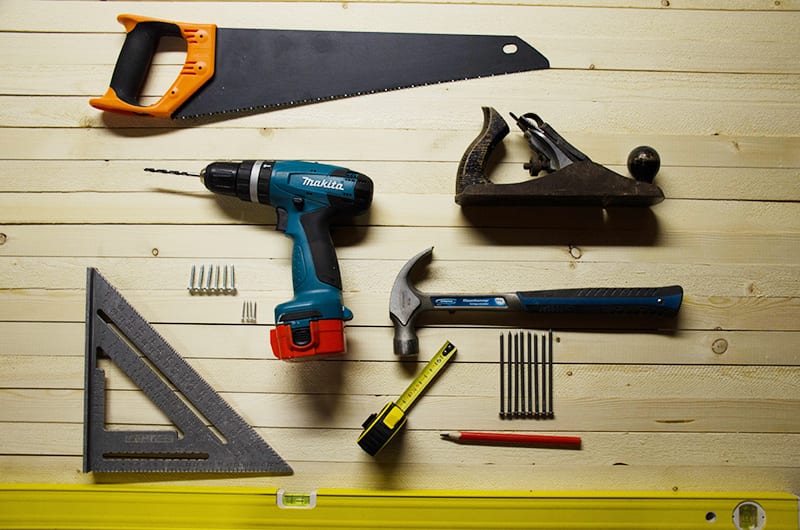DIY Home Plumbing Projects Ideas Instructions Tips Save
Home /

Without a doubt, plumbing issues take all sorts of shapes and sizes from clogged drains to sewer system backup that cause damage to walls, floors, and other personal property. Many plumbing problems can be repair without the help of a professional.
But even if you go with the DIY route, you must have to be pretty clear understanding about the step by step instructions and tips to save yourself from a plumbing disaster.
So, here’s our extensive guide on common DIY Home Plumbing Projects that’ll let you pocket savings by avoiding hefty plumber calls.
Let’s jump straight in:
Turn off Your Home’s Water Supply
Well, this is among the most essential and a requisite while you’re making plumbing repairs to any of the fixtures of pipes in your home’s plumbing or any catastrophic household event. Although, turning off water supply sounds too simple a task but by doing it correctly you could prevent major water damage that can otherwise cause thousands of dollars loss.
You don’t require any tool for undertaking this simple DIY task and it won’t cost you a penny. The first thing you’ll have to do is to find where the main water shut-off valve is.
In most homes with basements, it’ll likely be found near the entry point to your basement or crawlspace – where it enters your basement wall or floor. If you’re living in some area of warm climate, it can be located in your exterior – likely your yard. For homes built on slabs, the vale will be in a utility room or attached garage. In some cases, it’s also provided in the attic or the crawlspace. So, make sure to search it around and always remember it for future use.
Knowing your main water valve will allow you to quickly turn off the home’s water supply in case of a pipe burst or leaking pipe. Now that you’ve located the main water shut-off valve, the next thing is to rotate it clockwise with your bare hands or a set of tools depending on the type of valve. For normal ball-valve, you can simply turn the flow handle clockwise to make it perpendicular to the pipe. To resume the water flow into your house, simply rotate it until its parallel to the pipe.
Change out a Shower Head
Changing out a shower head is usually just a matter of unscrewing the old one and screwing on now one. It’s a quick and simple fix that usually takes around 15 to 30 minutes and you don’t even need some very special tool-box. All you need for this DIY project is, a pair of plier (or a wrench), Teflon tape, and a rust remover or mineral spirit (whichever you like).
The first step is to unscrew or loosen the old head – but sometimes you can simply rotate it clockwise with your bare hands to remove it off. Otherwise, you can use an adjustable wrench that has three clicks or you can just slip-joint with pliers and discard. In the next step, remove rust, calcification, or grime from the shower arm using a solvent solution or just with a piece of a rag. Now apply the Teflon tape to the threads of the showerhead to make the connection water-tight and leak-free. Next is, hand-screw the brand new shower head into the threads followed by tightening with pliers or an adjustable wrench. Don’t forget to check for leaks by turning the water on and tighten it further, in case of leaks.
Replace Faucet Fixtures
Getting tired of a leaky faucet? You could tackle a leaky or outdated faucet easily with a basin wrench and few other tools. Anyhow, before you leap; here’s a tip. If you visit a home depot hardware store, you’ll probably find hundreds of types of faucets with different shapes and sizes. Your sink configuration will also be varying i.e. it may have one, two, or three holes for the faucet. The holes may also be centered or widespread. So, before you can go out shopping, don’t’ forget to show them the old faucet assembly to buy the right replacement and that will save you time and aggravation.
Replacing a bathroom or kitchen faucet takes no more than about an hour and you can use the same step to install a new faucet onto a new sink. So, here’re the steps involved:
Turn off the water supply valves that is typically located under the sink. If you can’t find one, you have to turn to close the main water supply valve as already explained above. Then turn on the water faucet to release any water pressure left in both the hot and cold water lines.
Now disconnect the supply lines from the faucet. You can either do it manually with your hands or you can use a basin wrench if you can’t reach the connections with your hands. Next, disconnect the lifting rod which is a piece that opens and closes the sink drain.
Now you can remove the mounting nuts at the base of the faucet. After removing the old faucet, you’ll find grime and dust underneath. To clear these sink mounting holes, use mineral spirit or rust remover – you may have to use a rag to clean around the drain as well.
Before, putting on the new faucet, make sure to install a gasket at the base of the new faucet to avoid any play during usage. You’ll probably require sealant or plumber’s putty too depending on your new faucet. Next, put the new faucet through the mounting holes in the sink and tighten the mounting nuts underneath.
If your new faucet is not preassembled, you have to attach the handles. You simply need to slip the guide ring onto the bottom of the handle and tighten the setscrew with a hex wrench (usually provided).
New for the drain, screw the nut down on the drain body, and push the gasket over which is usually threaded and need to be screwed into place.
You can add a little bit of silicon under the flange and position the drain body on the bottom of the sink. Now tighten the nut and gasket followed by the removal of excess silicon with mineral spirit.
Now, install the drain rod by inserting the horizontal rod through the hole in the stopper and replacing the nut. A horizontal rod needs to be pushed down and secures the lifting rod to the strap with the screw.
Next, reconnect the supply lines with the faucet and if required, use a wrench to reach the faucet shanks. Check the entire assembly for any leakage and tighten or reinstall further as necessary.
Install or Replace a Faucet Aerator
So, your old faucet is giving you a low water pressure. The culprit is usually that clogged tiny holes of the aerator. Similarly, the threads on the aerator or spout can get worn or corroded causing dripping or leaking faucet.
Alternatively, if you don’t have a faucet aerator; you’re probably wasting around 30% more water due to un-aerated faucets.
But you can get rid of such a faulty faucet aerator or install a new one quite easily. Here’s how it is typically replaced:
Using a simple wrench or a socket wrench, unscrew your aerator and take it to the store or have it handy while you shop for a replacement online. This will help you in finding the right sized and configured replacement.
After getting the replacement, just screw it in followed by tightening with wrench or socket wrench. In the end, check for leaks and repeat tightening, if necessary.
Replace or Reseal a Tub Drain
It’s quite common for the bathtub drain to leak over time. Although there can be several reasons for the leak most commonly it is because of the drain flange and stopper. If the leakage is due to drain shoe or the piping that connects your drain to your main sewer line; the rectification work is a bit extensive that includes moving your tub or even putting a hole through the bathroom wall.
Anyhow, for the drain flange and stopper; here’s how one may proceed:
Remove the drain stopper by unscrewing from the top and set aside. Next is to remove the drain using a removal tool of simply the with the back of pliers. Just insert the back handles of pliers through the drain voids and rotate it counterclockwise until the drain flange pops out. In case the drain flange is stuck; heat the plumber’s putty or silicon with a hairdryer for several minutes.
After removing the drain, clean the hole and surrounding areas with mineral spirit and dry it with a soft rag. Now remove the worn-out shoe gasket and replace it with a new one followed by application of plumber putty around the opening of the drain. Apply Teflon tape on the screws of the new flange and screw it back in the opening with the drain removal tool by turning it clockwise. Now remove the excess plumber’s putty from around the drain and install back the stopper.
Caulk a Tub
Know the way to caulk your bathtub is crucial for preventing leaks and water damage. But over time the caulk cracks peels away and loses its grip on the side of the tub. With a damaged or worn out caulking the water can seep into the wall cavity and onto the floor over the sides causing even more irrevocable trouble. So, to determine if the caulk is causing is a leak, just have a look at the caulking around the tub. If they’re missing sections; you’ve got to re-caulk as below:
Just remove and cut away the old caulk from around the tub with a scraper, plastic razor, or take help from utility knife (be careful not to damage the tub). Take a fine rag soaked in mineral oil and clean around the area of the tub.
For the caulk, you can purchase a silicone or acrylic type. The silicone caulk is harder to work with but it lasts longer as compared with an acrylic type caulk. For applying caulk, you should follow the instructions on the caulking tube. Anyhow, just cut the tip of the tube at a 45-degree angle. You can paste the painter’s tape on either side of the joint to be caulked.
Now apply the caulk and use a damp rag to smooth it in a single fluid motion. Wipe away excess caulk and carefully remove the painter’s tape without disturbing the caulk. Wait for 24 hours to let the caulk cure before using the tub.
Fix a Running Toilet
There can be several reasons behind your running toilet. There can be an afloat problem, or a fill valve problem, or a flapper problem. Anyhow, you need to check inside the toilet tank and the culprit will be there.
However, whatever is the problem, the fixes are pretty straightforward and even you don’t need any plumbing experience. So, stop wasting water and fix the runny toilet as under:
To see if the flapper is the reason behind the running toilet. Push it down with a stick while water running and listen for it to stop. If the running water stops, the flapper isn’t sealing properly. You need to replace the flapper. To replace the flapper, shut off the water supply valve under the toilet or shut the main supply if the valve is also leaking. Drain out most of the water inside the tank and then unhook the old flapper. Install the new flapper according to the instructions on the package. Hook the flapper chain onto the flush lever arm so there’s little slack when the flapper is closed.
Now to check the fill valve for a leak; proceed as under:
Flush the toilet entirely and look for a fill valve leak. Lift on the toilet float arm while the tank is filling and see if the water stops. Adjust the toilet float arm so the tank stops filling when the water level is half to one inch below the top of the overflow pipe. If the fill valve still leaks, replace it according to the specifications of a new fill valve.
If still you can’t find the solution to running the toilet, you probably have a float problem. Floats come in two types – ball float and cup float. A faulty float may result in higher than normal water levels and that promotes running. Check the toilet’s overflow tube – if it’s taking on water, then you’ve got a float issue. Using pliers turn your float’s control screw counterclockwise until the water level stabilizes. Monitor the water level regularly and adjust in a hit and trial.
Contact Us for Your Plumbing Needs
For more information about our services or to obtain an estimate, reach out to us at Kwik Plumbers today. Feel free to call our team or fill out the form for an appointment. We look forward to hearing from you.

